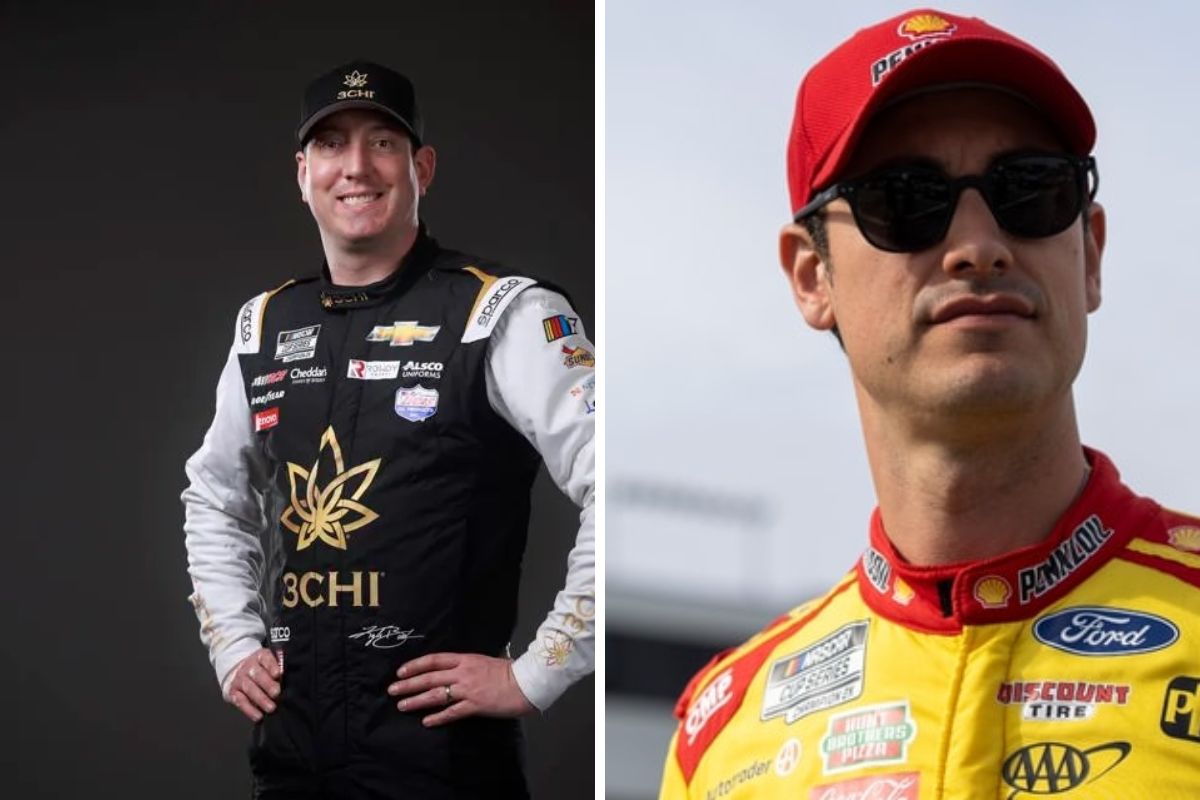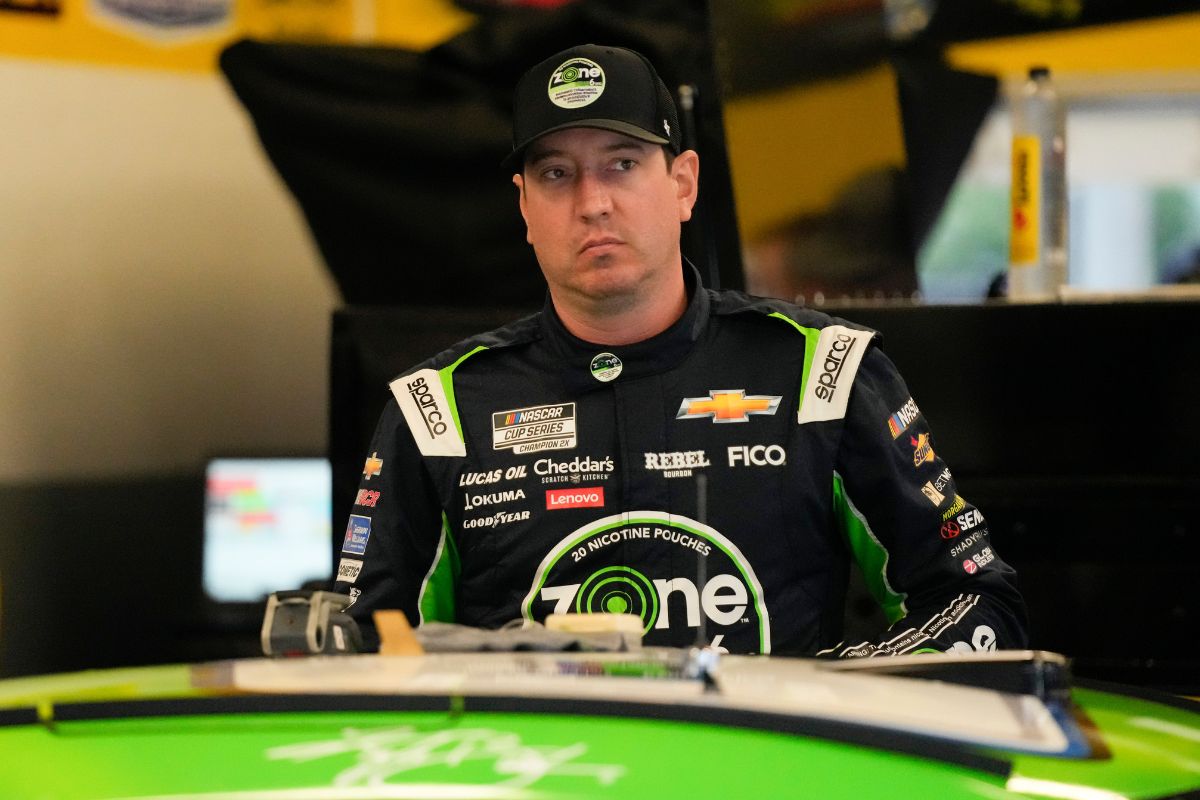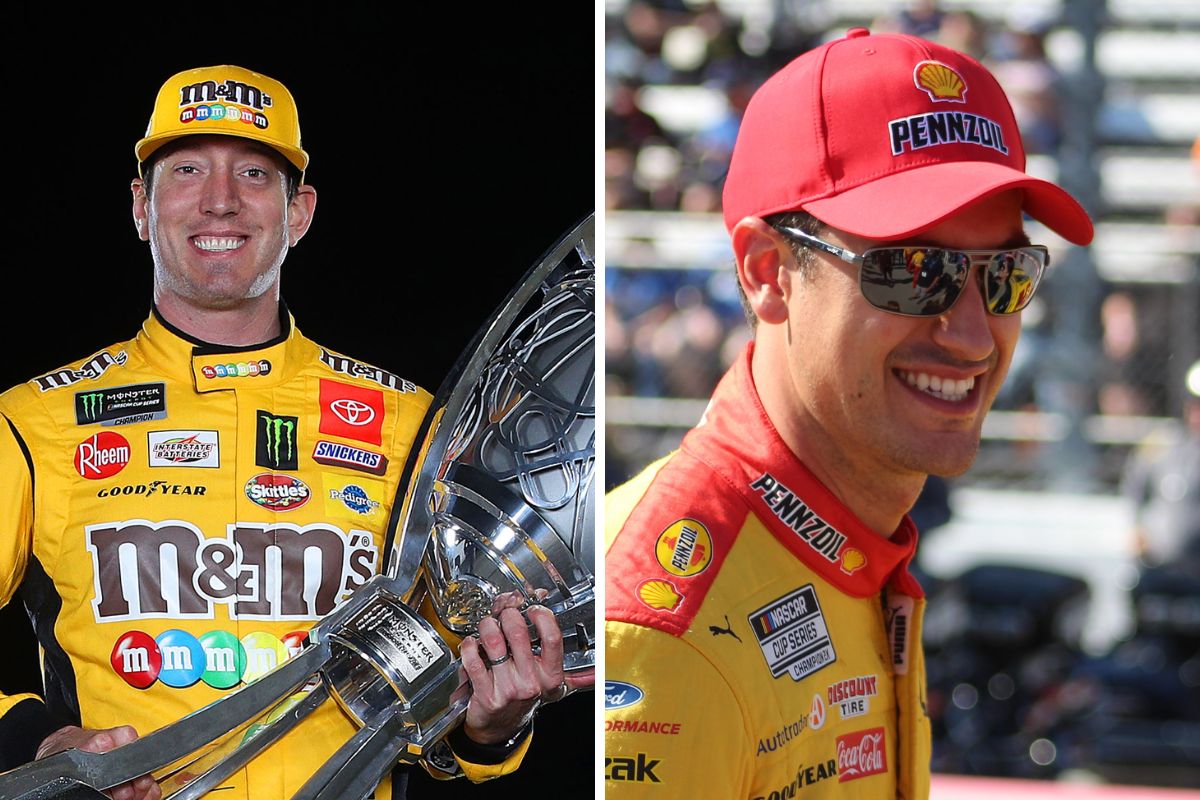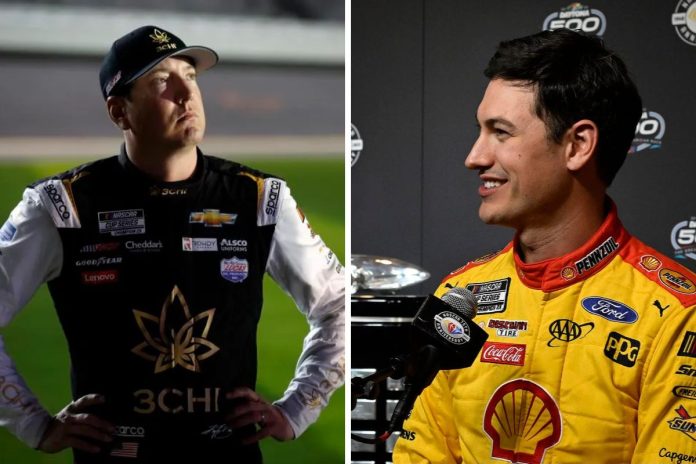Busch and Logano on Pit Crew Strain: The recent agreement of Kyle Busch with Joey Logano on the subject of pit crew demands brings a renewed focus on the intense demands placed on these behind-the-scenes teams. As drivers who consistently perform at the highest levels, their acknowledgment of the critical role and the accompanying stress pit crews endure highlights a significant aspect of motorsports that often goes unnoticed. These crews are not only required to execute their tasks flawlessly under immense time constraints but also to do so in a way that directly impacts the outcome of races, thus influencing careers and team success.
Key Takeaways
- Kyle Busch agrees with Joey Logano on the high stress levels faced by pit crews during races.
- Performance errors can lead to significant financial losses and championship impacts.
- Crews must execute tasks like tire changes and refueling flawlessly within seconds.
- Intense training and technology investments are made to minimize mistakes and optimize performance.
- The reputation of drivers like Busch and Logano increases pressure on pit crews to perform perfectly.
Importance of Pit Crew Performance
The performance of a pit crew is vital in motorsports, as their efficiency and accuracy directly influence the outcome of a race. A smooth pit stop can save seconds off the clock, propelling a car ahead of its competitors, while a mistake can be lethal, leading to financial losses and reduced championship prospects.
Analyzing the dynamics of pit crew operations, each member—from the tire changers to the jackman—must perform their role flawlessly within a tightly practiced sequence that typically lasts no more than a few seconds.
Furthermore, the financial implications of pit crew performance are significant. Teams invest heavily in training and technology to minimize the risk of errors that can lead to costly penalties or, worse, accidents.

Kyle Busch on Pit Crew Pressure
In a recent pre-race interview in Texas, Kyle Busch agreed to Joey Logano’s sentiments regarding the different demands pit crews face depending on their race position, emphasizing the heightened scrutiny experienced by teams associated with top-tier drivers. Busch supported Logano’s perspective.
“I would say it’s still unsettled. The proof is in your results, right? You’re only as good as your last race as drivers tend to say. You’re only as good as your last stop, I guess, as a pit crew guy should say.”-(BUSCH)
- Mid-Season Overhaul: The crew underwent substantial changes, addressing earlier inconsistencies. This reshuffle was significant, aiming to enhance the speed and reliability of pit stops, which are critical under race-day demands.
- Strategic Pit Stops: In races like the one in Texas, Busch started 35th and impressively finished 9th, showcasing the crew’s strategic execution. Decisions made by crew chief Randall Burnett played a significant role, optimizing pit stop timing to gain positions effectively.
- Consistency in Results: Achieving two top-ten finishes in the last four outings indicates a positive trajectory in the crew’s performance post-reshuffle. This consistency is essential for building confidence and momentum as the season progresses.

News in Brief: Busch and Logano on Pit Crew Strain
The analysis emphasizes the crucial role pit crews play in competitive racing, where the stakes are very high.
The insights shared by Kyle Busch highlight the profound impact that driver reputation can have on the stress levels experienced by pit crew members.
This relationship necessitates the development of robust mental resilience and strategic preparedness within these teams.
Ultimately, cultivating a culture of high performance is essential for meeting the relentless demands of the racing industry.
Our Reader’s Queries
Q: Who are Kyle Busch’s pit crew?
A: Kyle Busch’s Richard Childress Racing Chevrolet will see three new pit crew members at Phoenix Raceway. Shiloh Windsor takes over as the front tire changer, Michael Johnson as the rear tire changer, and Doug Warrick as the new jackman.
Q: Who is the head of pit crew?
A: The crew chief manages pit crew actions, communicates with the driver, and monitors race progress via flat-screen monitors in the pit box, ensuring strategic decisions align with race conditions.
Also Read: Nick Sanchez’s Texas Heartbreak: Dreaming of Victory Lane, Denied by Kyle Busch
“I look at the #24 bunch when William got over there,” (kyle) said. “They probably were like, ‘Okay, there’s a young kid coming in. Whatever, nobody’s going to have any eyeballs on us.’ But Kyle [himself] moving over to RCR there are certainly more eyeballs on that pit crew and the things that they do.”

Kyle Busch’s Pit Crew Performance
Amidst ongoing adjustments, Kyle Busch’s pit crew at Richard Childress Racing has demonstrated resilience and strategic skills in recent races, despite facing continuous challenges this season. The team’s performance reflects a significant adaptation phase under the demands of motorsports.
“I would say it’s still unsettled. The proof is in your results, right? You’re only as good as your last race as drivers tend to say. You’re only as good as your last stop, I guess, as a pit crew guy should say.”-(BUSCH)
- Mid-Season Overhaul: The crew underwent substantial changes, addressing earlier inconsistencies. This reshuffle was significant, aiming to enhance the speed and reliability of pit stops, which are critical under race-day demands.
- Strategic Pit Stops: In races like the one in Texas, Busch started 35th and impressively finished 9th, showcasing the crew’s strategic execution. Decisions made by crew chief Randall Burnett played a significant role, optimizing pit stop timing to gain positions effectively.
- Consistency in Results: Achieving two top-ten finishes in the last four outings indicates a positive trajectory in the crew’s performance post-reshuffle. This consistency is essential for building confidence and momentum as the season progresses.

News in Brief: Busch and Logano on Pit Crew Strain
The analysis emphasizes the crucial role pit crews play in competitive racing, where the stakes are very high.
The insights shared by Kyle Busch highlight the profound impact that driver reputation can have on the stress levels experienced by pit crew members.
This relationship necessitates the development of robust mental resilience and strategic preparedness within these teams.
Ultimately, cultivating a culture of high performance is essential for meeting the relentless demands of the racing industry.
Our Reader’s Queries
Q: Who are Kyle Busch’s pit crew?
A: Kyle Busch’s Richard Childress Racing Chevrolet will see three new pit crew members at Phoenix Raceway. Shiloh Windsor takes over as the front tire changer, Michael Johnson as the rear tire changer, and Doug Warrick as the new jackman.
Q: Who is the head of pit crew?
A: The crew chief manages pit crew actions, communicates with the driver, and monitors race progress via flat-screen monitors in the pit box, ensuring strategic decisions align with race conditions.
Also Read: Nick Sanchez’s Texas Heartbreak: Dreaming of Victory Lane, Denied by Kyle Busch
(Busch) – “I feel like, sometimes, just the nature of a driver’s name might put added pressure on a team. Because they’re looked at a lot more and they’ve got eyeballs on them a little bit heavily. The teams that I’ve had in the past have done phenomenal jobs of living up to the pressure.”
- Visibility and Examination: Busch noted that pit crews for well-known drivers are under constant observation, which magnifies every action and potential mistake. This visibility significantly increases the expectation to perform flawlessly.
- Performance Expectations: The expectation to execute pit stops flawlessly is higher for teams associated with renowned drivers. These demands can lead to intense performance strain during critical race moments.
- Historical Performance: Referring to his own experience, Busch mentioned how his teams have historically risen to the occasion, particularly in important races like those at Homestead-Miami, showcasing their ability to handle stress adeptly.
Impact of Driver Name on Pit Crews
Reflecting on the influence of a driver’s prominence, Kyle Busch’s observations reveal how pit crews experience varying levels of scrutiny and stress based on the reputation and expectations tied to the driver they support. When an established star like Busch joins a new team, the spotlight intensifies not only on him but also on his pit crew.
Busch’s move to Richard Childress Racing highlights a notable shift in expectations and scrutiny. The pit crew, aware of the heightened stakes and the intense scrutiny that comes with a top-tier driver, likely feels a heightened sense of demand to perform flawlessly. This contrasts sharply with the situation described at Hendrick Motorsports when William Byron, a less established driver at the time, joined the team.
“I look at the #24 bunch when William got over there,” (kyle) said. “They probably were like, ‘Okay, there’s a young kid coming in. Whatever, nobody’s going to have any eyeballs on us.’ But Kyle [himself] moving over to RCR there are certainly more eyeballs on that pit crew and the things that they do.”

Kyle Busch’s Pit Crew Performance
Amidst ongoing adjustments, Kyle Busch’s pit crew at Richard Childress Racing has demonstrated resilience and strategic skills in recent races, despite facing continuous challenges this season. The team’s performance reflects a significant adaptation phase under the demands of motorsports.
“I would say it’s still unsettled. The proof is in your results, right? You’re only as good as your last race as drivers tend to say. You’re only as good as your last stop, I guess, as a pit crew guy should say.”-(BUSCH)
- Mid-Season Overhaul: The crew underwent substantial changes, addressing earlier inconsistencies. This reshuffle was significant, aiming to enhance the speed and reliability of pit stops, which are critical under race-day demands.
- Strategic Pit Stops: In races like the one in Texas, Busch started 35th and impressively finished 9th, showcasing the crew’s strategic execution. Decisions made by crew chief Randall Burnett played a significant role, optimizing pit stop timing to gain positions effectively.
- Consistency in Results: Achieving two top-ten finishes in the last four outings indicates a positive trajectory in the crew’s performance post-reshuffle. This consistency is essential for building confidence and momentum as the season progresses.

News in Brief: Busch and Logano on Pit Crew Strain
The analysis emphasizes the crucial role pit crews play in competitive racing, where the stakes are very high.
The insights shared by Kyle Busch highlight the profound impact that driver reputation can have on the stress levels experienced by pit crew members.
This relationship necessitates the development of robust mental resilience and strategic preparedness within these teams.
Ultimately, cultivating a culture of high performance is essential for meeting the relentless demands of the racing industry.
Our Reader’s Queries
Q: Who are Kyle Busch’s pit crew?
A: Kyle Busch’s Richard Childress Racing Chevrolet will see three new pit crew members at Phoenix Raceway. Shiloh Windsor takes over as the front tire changer, Michael Johnson as the rear tire changer, and Doug Warrick as the new jackman.
Q: Who is the head of pit crew?
A: The crew chief manages pit crew actions, communicates with the driver, and monitors race progress via flat-screen monitors in the pit box, ensuring strategic decisions align with race conditions.
Also Read: Nick Sanchez’s Texas Heartbreak: Dreaming of Victory Lane, Denied by Kyle Busch
“I look at the #24 bunch when William got over there,” (kyle) said. “They probably were like, ‘Okay, there’s a young kid coming in. Whatever, nobody’s going to have any eyeballs on us.’ But Kyle [himself] moving over to RCR there are certainly more eyeballs on that pit crew and the things that they do.”

Kyle Busch’s Pit Crew Performance
Amidst ongoing adjustments, Kyle Busch’s pit crew at Richard Childress Racing has demonstrated resilience and strategic skills in recent races, despite facing continuous challenges this season. The team’s performance reflects a significant adaptation phase under the demands of motorsports.
“I would say it’s still unsettled. The proof is in your results, right? You’re only as good as your last race as drivers tend to say. You’re only as good as your last stop, I guess, as a pit crew guy should say.”-(BUSCH)
- Mid-Season Overhaul: The crew underwent substantial changes, addressing earlier inconsistencies. This reshuffle was significant, aiming to enhance the speed and reliability of pit stops, which are critical under race-day demands.
- Strategic Pit Stops: In races like the one in Texas, Busch started 35th and impressively finished 9th, showcasing the crew’s strategic execution. Decisions made by crew chief Randall Burnett played a significant role, optimizing pit stop timing to gain positions effectively.
- Consistency in Results: Achieving two top-ten finishes in the last four outings indicates a positive trajectory in the crew’s performance post-reshuffle. This consistency is essential for building confidence and momentum as the season progresses.

News in Brief: Busch and Logano on Pit Crew Strain
The analysis emphasizes the crucial role pit crews play in competitive racing, where the stakes are very high.
The insights shared by Kyle Busch highlight the profound impact that driver reputation can have on the stress levels experienced by pit crew members.
This relationship necessitates the development of robust mental resilience and strategic preparedness within these teams.
Ultimately, cultivating a culture of high performance is essential for meeting the relentless demands of the racing industry.
Our Reader’s Queries
Q: Who are Kyle Busch’s pit crew?
A: Kyle Busch’s Richard Childress Racing Chevrolet will see three new pit crew members at Phoenix Raceway. Shiloh Windsor takes over as the front tire changer, Michael Johnson as the rear tire changer, and Doug Warrick as the new jackman.
Q: Who is the head of pit crew?
A: The crew chief manages pit crew actions, communicates with the driver, and monitors race progress via flat-screen monitors in the pit box, ensuring strategic decisions align with race conditions.
Also Read: Nick Sanchez’s Texas Heartbreak: Dreaming of Victory Lane, Denied by Kyle Busch
(Busch) – “I feel like, sometimes, just the nature of a driver’s name might put added pressure on a team. Because they’re looked at a lot more and they’ve got eyeballs on them a little bit heavily. The teams that I’ve had in the past have done phenomenal jobs of living up to the pressure.”
- Visibility and Examination: Busch noted that pit crews for well-known drivers are under constant observation, which magnifies every action and potential mistake. This visibility significantly increases the expectation to perform flawlessly.
- Performance Expectations: The expectation to execute pit stops flawlessly is higher for teams associated with renowned drivers. These demands can lead to intense performance strain during critical race moments.
- Historical Performance: Referring to his own experience, Busch mentioned how his teams have historically risen to the occasion, particularly in important races like those at Homestead-Miami, showcasing their ability to handle stress adeptly.
Impact of Driver Name on Pit Crews
Reflecting on the influence of a driver’s prominence, Kyle Busch’s observations reveal how pit crews experience varying levels of scrutiny and stress based on the reputation and expectations tied to the driver they support. When an established star like Busch joins a new team, the spotlight intensifies not only on him but also on his pit crew.
Busch’s move to Richard Childress Racing highlights a notable shift in expectations and scrutiny. The pit crew, aware of the heightened stakes and the intense scrutiny that comes with a top-tier driver, likely feels a heightened sense of demand to perform flawlessly. This contrasts sharply with the situation described at Hendrick Motorsports when William Byron, a less established driver at the time, joined the team.
“I look at the #24 bunch when William got over there,” (kyle) said. “They probably were like, ‘Okay, there’s a young kid coming in. Whatever, nobody’s going to have any eyeballs on us.’ But Kyle [himself] moving over to RCR there are certainly more eyeballs on that pit crew and the things that they do.”

Kyle Busch’s Pit Crew Performance
Amidst ongoing adjustments, Kyle Busch’s pit crew at Richard Childress Racing has demonstrated resilience and strategic skills in recent races, despite facing continuous challenges this season. The team’s performance reflects a significant adaptation phase under the demands of motorsports.
“I would say it’s still unsettled. The proof is in your results, right? You’re only as good as your last race as drivers tend to say. You’re only as good as your last stop, I guess, as a pit crew guy should say.”-(BUSCH)
- Mid-Season Overhaul: The crew underwent substantial changes, addressing earlier inconsistencies. This reshuffle was significant, aiming to enhance the speed and reliability of pit stops, which are critical under race-day demands.
- Strategic Pit Stops: In races like the one in Texas, Busch started 35th and impressively finished 9th, showcasing the crew’s strategic execution. Decisions made by crew chief Randall Burnett played a significant role, optimizing pit stop timing to gain positions effectively.
- Consistency in Results: Achieving two top-ten finishes in the last four outings indicates a positive trajectory in the crew’s performance post-reshuffle. This consistency is essential for building confidence and momentum as the season progresses.

News in Brief: Busch and Logano on Pit Crew Strain
The analysis emphasizes the crucial role pit crews play in competitive racing, where the stakes are very high.
The insights shared by Kyle Busch highlight the profound impact that driver reputation can have on the stress levels experienced by pit crew members.
This relationship necessitates the development of robust mental resilience and strategic preparedness within these teams.
Ultimately, cultivating a culture of high performance is essential for meeting the relentless demands of the racing industry.
Our Reader’s Queries
Q: Who are Kyle Busch’s pit crew?
A: Kyle Busch’s Richard Childress Racing Chevrolet will see three new pit crew members at Phoenix Raceway. Shiloh Windsor takes over as the front tire changer, Michael Johnson as the rear tire changer, and Doug Warrick as the new jackman.
Q: Who is the head of pit crew?
A: The crew chief manages pit crew actions, communicates with the driver, and monitors race progress via flat-screen monitors in the pit box, ensuring strategic decisions align with race conditions.
Also Read: Nick Sanchez’s Texas Heartbreak: Dreaming of Victory Lane, Denied by Kyle Busch


